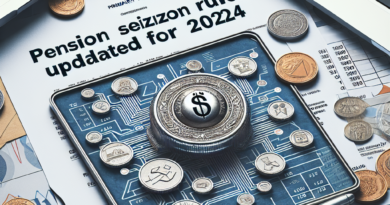What Happens if I Don’t Pay Property Tax (IMU)? And If I Pay Late?
What Happens If I Don’t Pay IMU?
What are the risks if I pay the tax late? These are questions that may arise for those who failed to pay the property tax by June 17, 2024, the deadline for the payment of the IMU down payment.
This is a question that a taxpayer who plans not to pay the property tax could ask.
Before understanding what happens to those who do not pay the IMU, it is important to note that in recent years the checks on unpaid IMU have become much stricter and several Municipalities are proceeding with enforcement checks to recover unpaid taxes.
This is not a novelty for 2024, as it was actually the 2020 Budget Law that provided for more severe checks against those who do not pay local taxes.
Unpaid IMU in 2024: Increasingly Heavy Controls
The 2020 Budget Law has reformed the system of collection of local taxes and, starting from January 1st, the acts issued must contain all the necessary information to be effective as executive titles.
The extension of enforcement checks to Municipalities means that already after the notification of the act, and in case of failure to pay the disputed amount (and therefore within 120 days), coercive recovery activities can be initiated with the risk of seizure of the taxpayer’s bank accounts.
A concrete risk, also considering the possibility for local authorities to access the data contained in the Tax Registry, the maxi archive with income information relating to each taxpayer.
It should be specified that a reasonable time is still granted to regularize the unpaid IMU as well as other local taxes (think of car tax), but in case of non-compliance, all executive and precautionary procedures currently provided for, such as administrative detention, mortgage, or seizure, can be initiated immediately.
What Happens If I Don’t Pay IMU?
What changes and what are the risks in case of non-payment of IMU 2024?
The non-payment of IMU has consequences for taxpayers, and the Italian Revenue Agency explains them: after the useful time for filing an appeal has elapsed (i.e., after 60 days from the notification of the act aimed at collecting property revenues), the acts issued by the Municipality acquire the effectiveness of an executive title without the need to notify the payment notice (or the tax injunction).
After 30 days from the deadline for payment, forced collection procedures can be initiated, informing the debtor taxpayer beforehand but without the need to issue a new payment notice: the act already notified by the Municipality will be sufficient to start the seizure procedure, in case of failure to pay the disputed amount.
Execution is suspended for a period between 120 and 180 days, based on the procedure provided by each entity.
Before starting the executive and precautionary procedure, the debtor taxpayer will need to send a payment reminder if the evaded amount does not exceed 10,000 euros.
In essence, it will be the last notice to regularize before undergoing the most invasive practices of forced recovery of unpaid taxes.
Late Payment of IMU: What Are the Risks?
For those who have not paid the IMU by June 17, there is still a way to remedy without seeing the amount to be paid to the Municipality increase too much.
Even for local taxes, it is possible to take advantage of the voluntary disclosure, which allows paying reduced penalties based on the days of delay compared to the original deadline.
Thanks to the voluntary disclosure, in fact, although an administrative penalty for the delay is still provided, but reduced to 10%:
- Within 14 days from the deadline: sprint voluntary disclosure, a daily penalty of 0.1% plus interest for each day of delay in case of payment;
- From the 15th to the 30th day of delay from the IMU and Tasi deadline: brief voluntary disclosure, a fixed penalty of 1.5% plus daily interest for payment;
- After the 30th day and up to the 90th day of delay from the IMU deadline: medium voluntary disclosure, a fixed penalty of 1.67% plus daily interest for payment;
- After the 90th day of delay and within the year: long voluntary disclosure, a fixed penalty of 3.75% of the amount plus daily interest for payment after the 90th day of delay and within the year.
IMU voluntary disclosure: how to pay penalties
IMU penalties and interest are paid by filling out the F24 form and checking the voluntary disclosure box.
The F24 form must be filled in by entering the following information:
| Field to fill | Description |
| Council code/Municipality code | Municipality cadastral code (e.g., ROME = H501) |
| ravv. | box to check in case of F24 form for voluntary disclosure |
| imm. var. |
check if variations have occurred for one or more properties requiring the presentation of the variation statement |
| acc. | check the box if the payment refers to the down payment |
| balance | check the box if the payment refers to the balance. If the payment is made in a single solution, check both boxes |
| number of properties | indicate the number of properties for which the IMU is being paid |
| tax code | IMU tax code |
| instalment/month of ref. | instalment to be paid (two digits) and chosen number of instalments (two digits), in the example 0102 |
| reference year | tax period for which the payment is made |
| debts paid | indicate the tax debt |
| offset credits | indicate any credit available for offset |
| TOTAL G | sum of the tax debts in the IMU and local taxes section |
| TOTAL H | sum of the credits indicated in the IMU and local taxes section |
| BALANCE (G-H) | indicate the balance resulting from G – H |
| deduction | indicate any applicable deduction |


